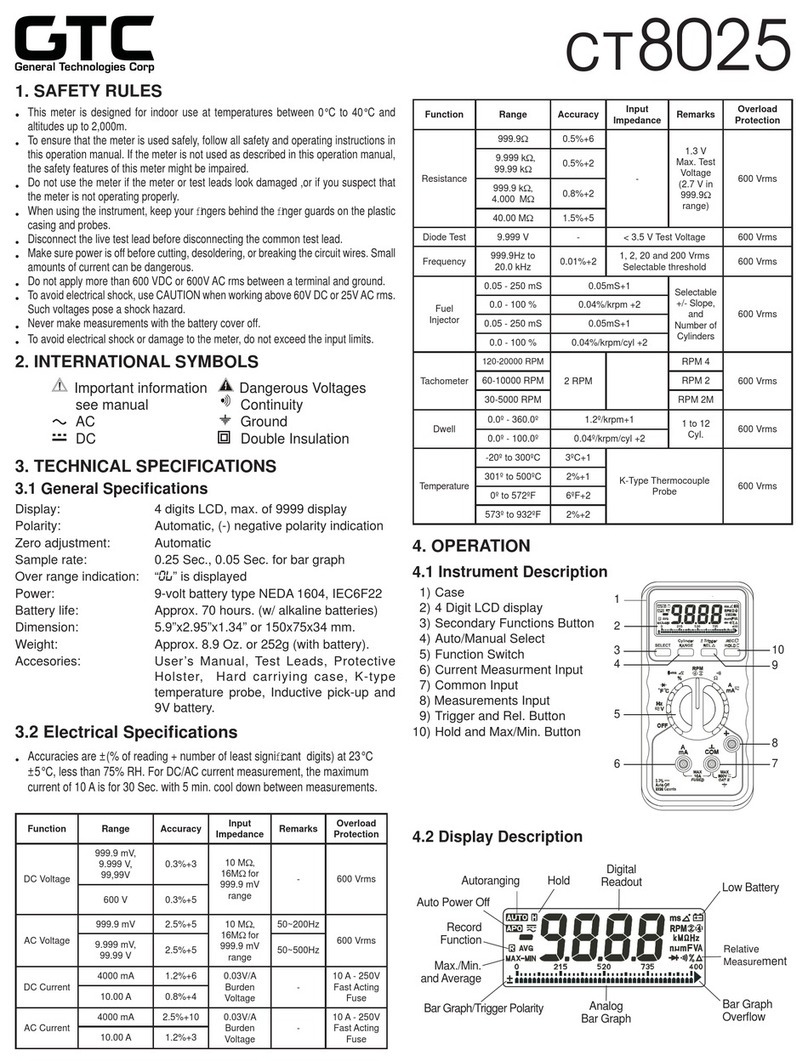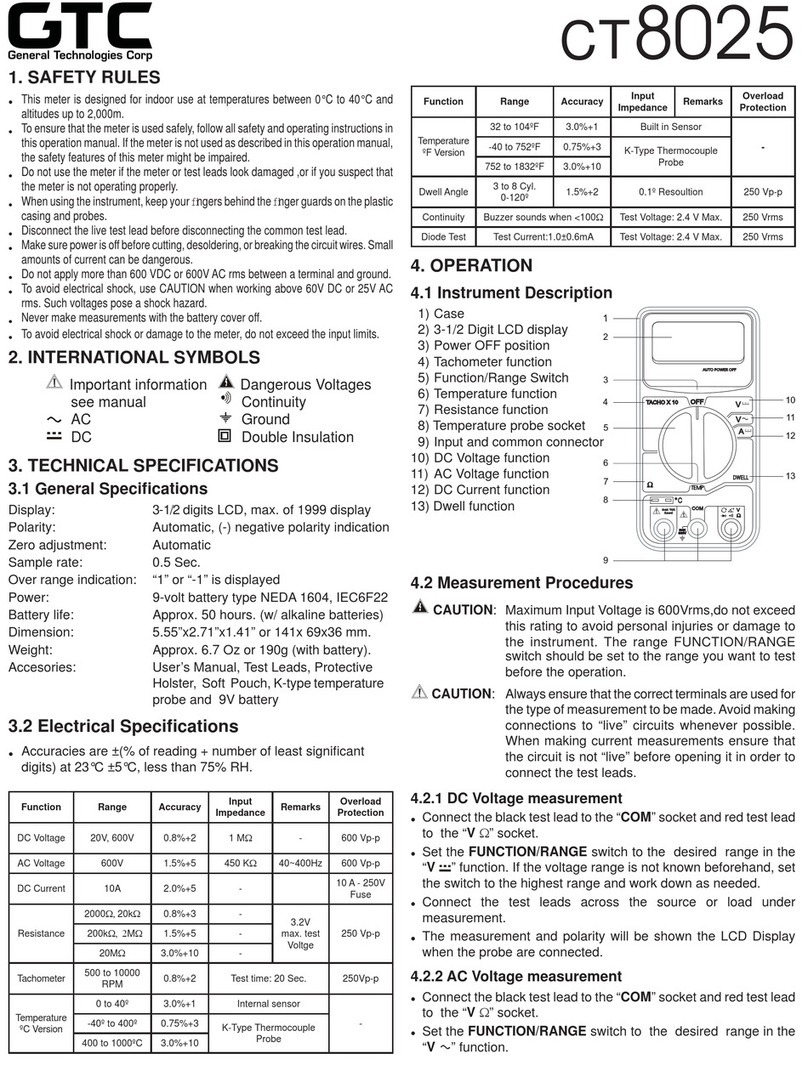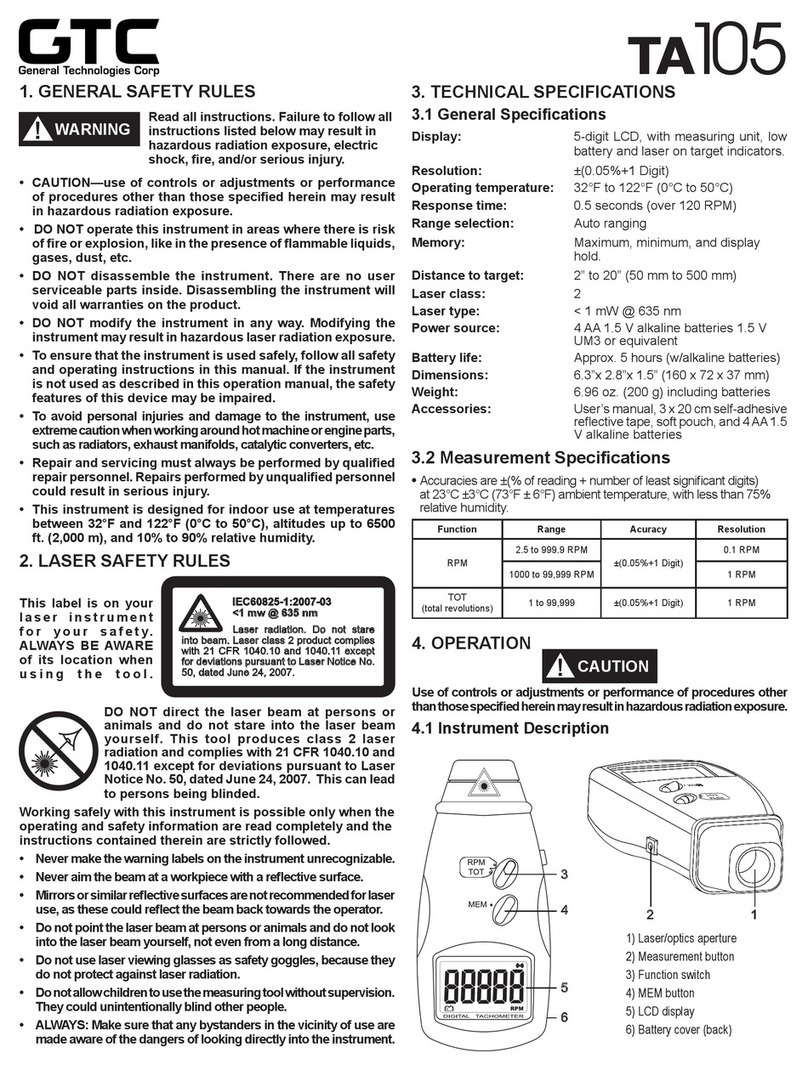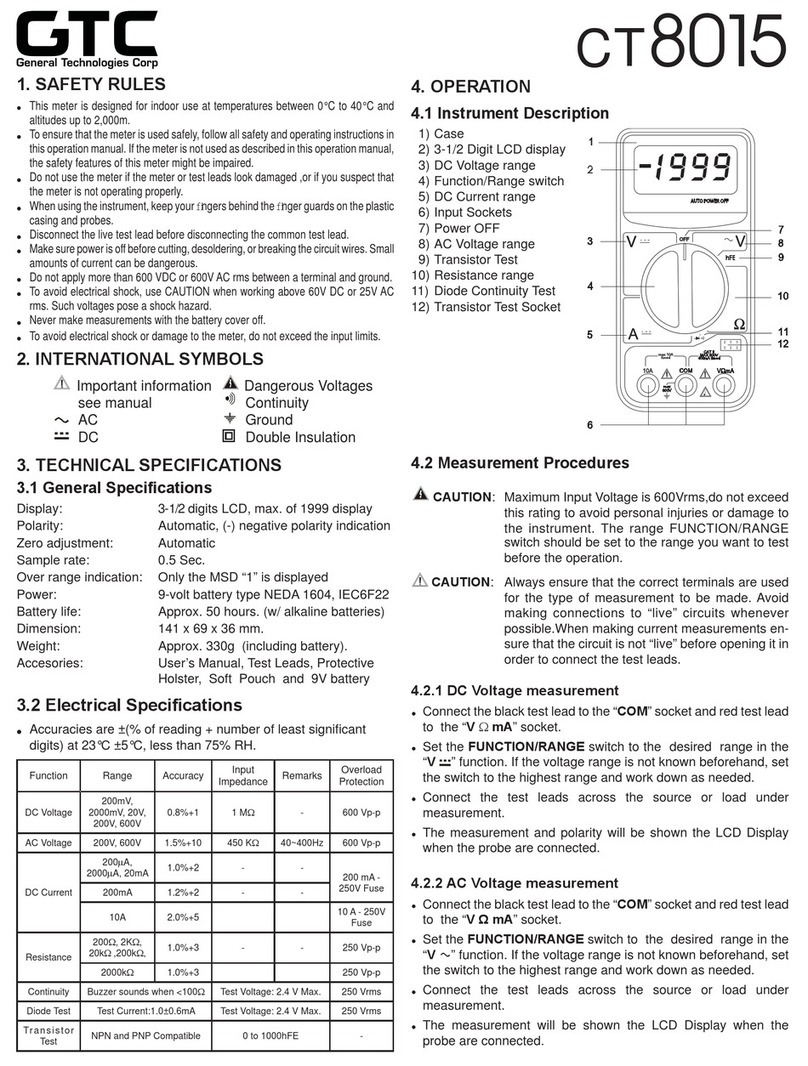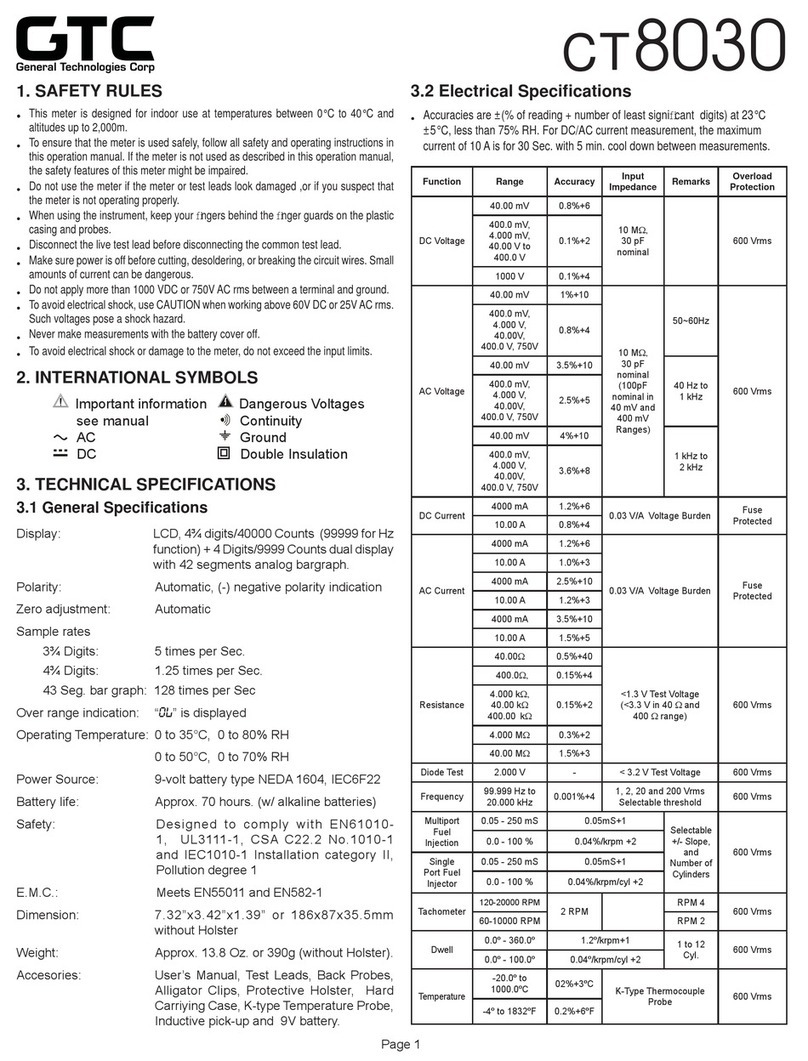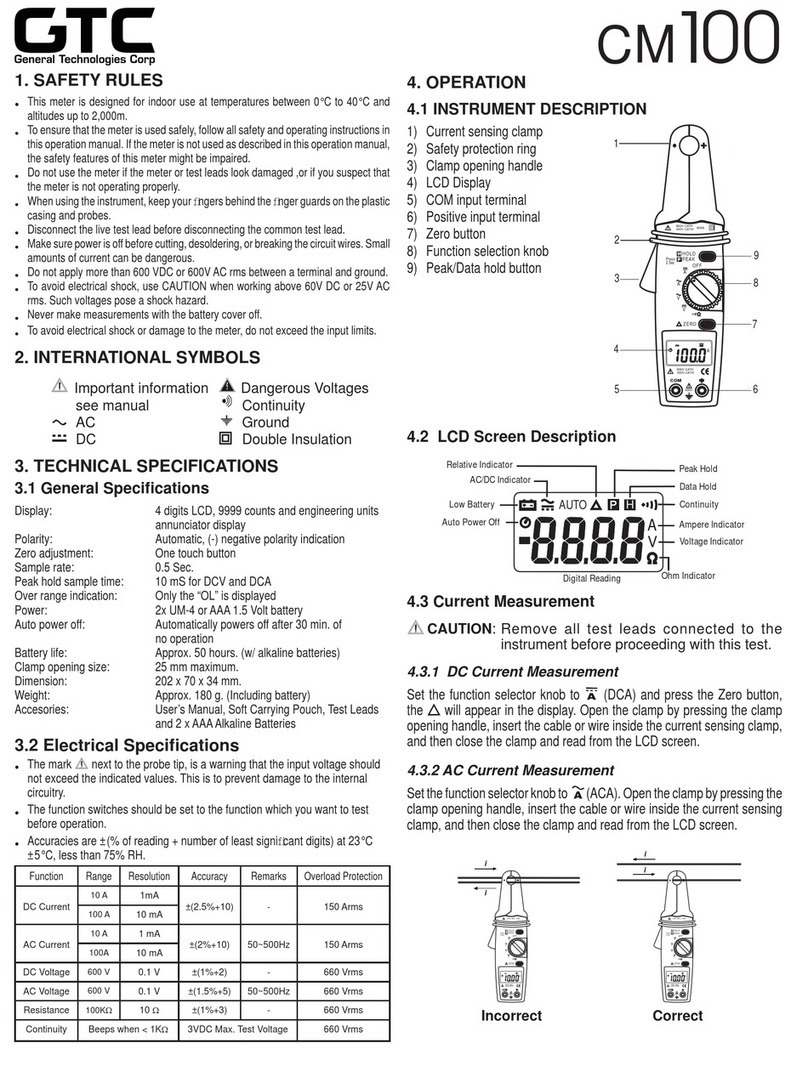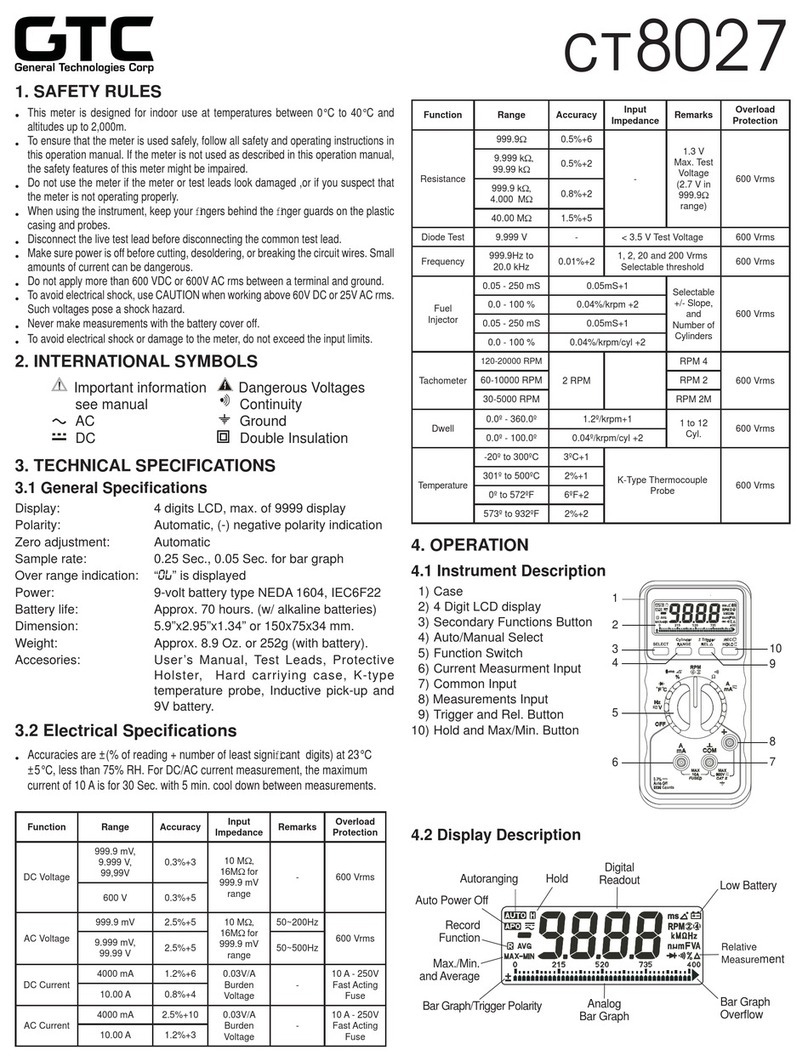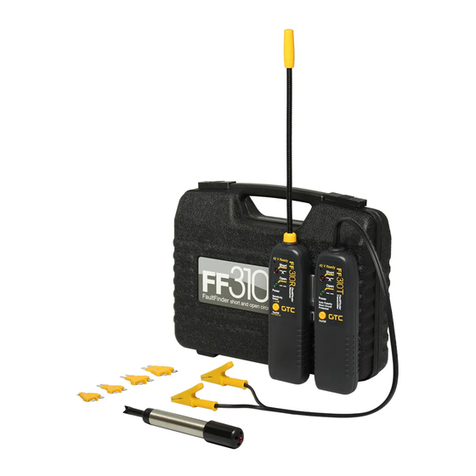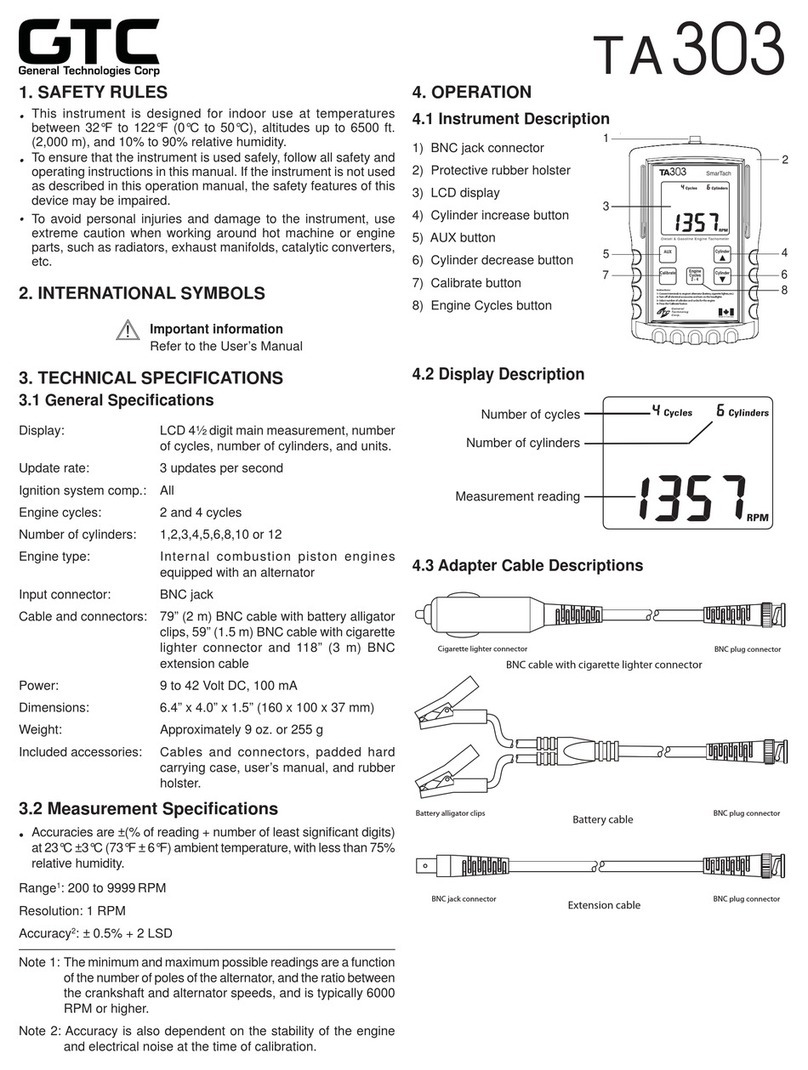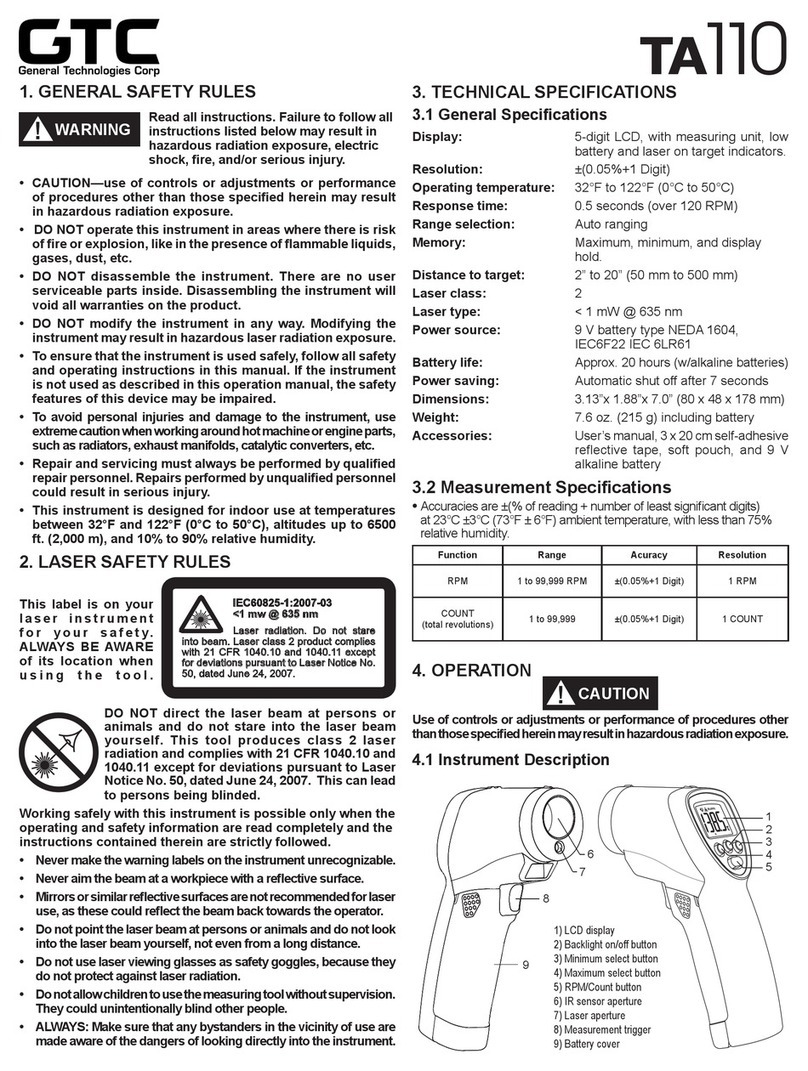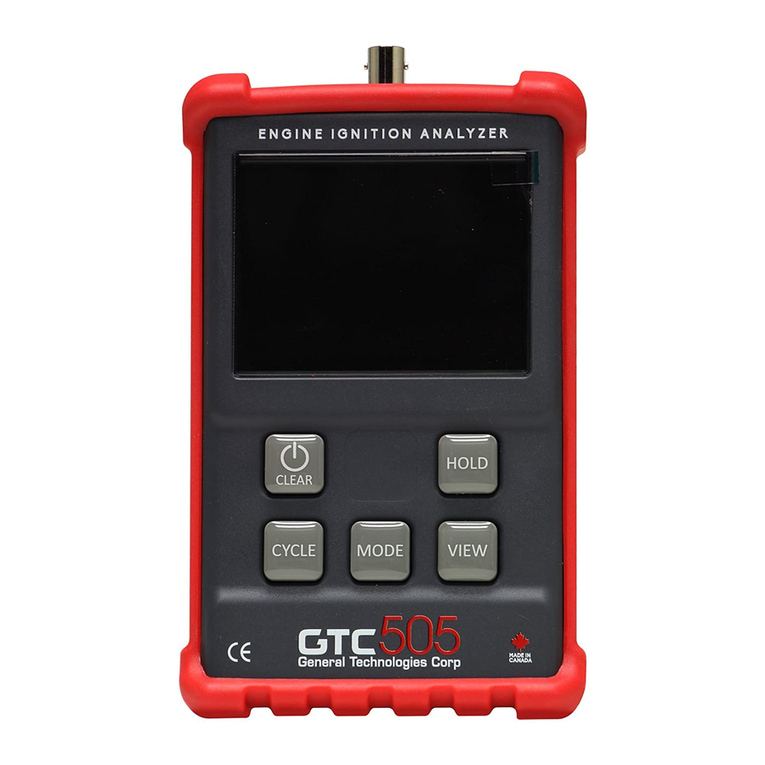Page 5
9 - Locating Open Circuits
Refer to the Hook Up Reference Chart in Page 6.
9.1 Observe the limits and safety precautions at all times (refer to the beginning of
this handbook)
9.2 Connect the FF310T in series with the open ended wire, making sure one of the
unit’s clips is connected to the circuit’s positive supply or ground . A fuse socket
(withthe fuse removed), a connector,etc., provides a convenient hook up asshown
in Fig. 2, 3, 4 and 5 of the Hook Up Reference Chart.
9.3 Make sure that the clips are firmly attached to their connection points, and switch
the FF310T on by pressing the On/Off button. Observe if the green LED on the
FF310T starts flashing. In the case of having connected the unit to any place
other than the fuse socket, check that the circuit’s fuse is installed and in working
condition (not open). If necessary replace with a new fuse with same rating.
9.4 Switch the FF310R on, insuring the green LED turns on and set if
necessary the sensitivity level to “LOW”.
9.5 Slowly sweep the wire with the FF310R, ensuring the sensor is perpendicular to
and above or below the wire being traced and as close as possible to it .
9.6 Follow the wire or check it at different points, starting from the FF310T and
moving towards the load (accessory, light, etc.), observing the positioning of the
sensor as indicated above. Continue this procedure while the audio signal (beep-
ing sound) and visual signal (flashing green LED light) indicates the integrity of
the circuit. If beeping and flashing slows or stops, it indicates that the sensor is
either moving away from the wire or it has passed beyond the open, break or bad
connection in the circuit.
9.7 If difficult or impossible to get the FF310R to pick-up any signal, then increase the
sensitivity level and start again from step 9.5.
9.8 Double check by positioning the sensor before and after the suspected place. If
the open circuit point has been located, the audio/visual indicators will show circuit
integrity on one side, and not on the other.
9.9 At this point, where the audio/visual signal stops, you have found the open circuit.
9.10 When the test is completed, switch off the FF310T unit pressing the On/Off button
anddisconnect from circuit.You may also switch offthe FF310Rbypressingthe On/
Off button on the unit. However to conserve power, the FF310R will automatically
turn off after 3 minutes of not being used.
Note: The closer the FF310R’s sensor is to the wire carrying the signal, the faster the
beeping and the flashing will be.
10 - Wire identification
Refer to the Hook Up Reference Chart in Page 6.
Wiringcanbe identifiedby followingthehookupandproceduresforlocatingshort circuits
or open circuits, depending on the particular configuration of the circuit.
•For identifying wires with load connected: Connect the FF310T as described
in section ‘6- Locating Short Circuits’ to the circuit to be identified, then
proceed to scan all suspected wiring with the FF310R’s sensor until the flashing and
beepingis at itsmaximum.In the caseoftightly packed wires(bundles, conduits, etc.),
it may be necessary to spread these apart to facilitate the identification process of
a particular wire.












